Artificial intelligence in filmmaking: New creative possibilities
AI in the entertainment industry is helping capture new and creative storylines. Learn how AI models assist crew members with tasks like editing and scriptwriting.

AI in the entertainment industry is helping capture new and creative storylines. Learn how AI models assist crew members with tasks like editing and scriptwriting.

The film Here was released a few weeks ago and is a great example of how artificial intelligence (AI) is transforming the filmmaking process. Directed by Robert Zemeckis, the movie used advanced AI-powered de-aging technology to show actors Tom Hanks and Robin Wright as their characters across 60 years. Unlike traditional CGI (Computer-Generated Imagery), which can take months to perfect, this approach made it possible to see instant on-set transformations, saving time and money. AI is not just enhancing storytelling but also making film production more efficient and innovative.
In fact, Hollywood is now experimenting with innovative techniques like AI-driven facial replacement, deepfake-style character enhancements, automatic background generation, and real-time virtual environments. These innovations are making visual effects more realistic and production more efficient. Reports show that the adoption of generative AI in the film industry is growing rapidly, with an impressive annual growth rate of 27.2%.
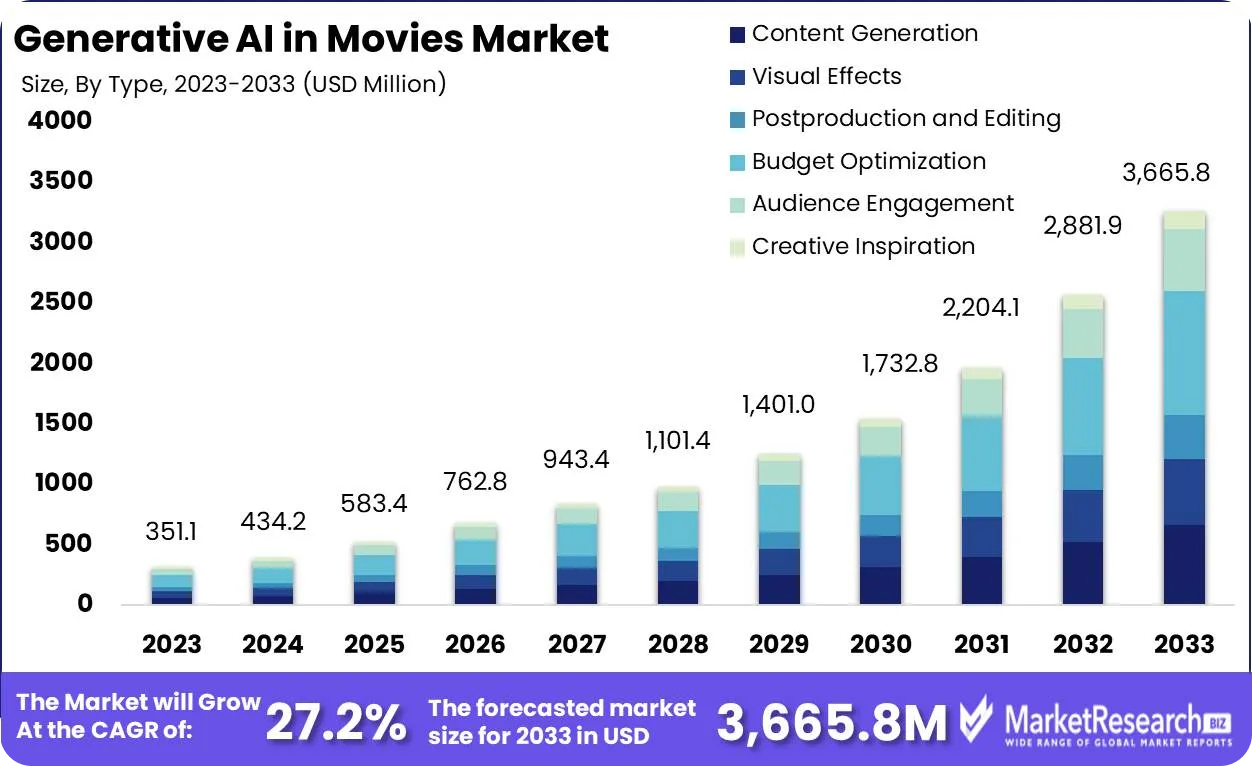
In recent years, CGI has become a standard feature in many movies. Almost every Marvel Studios film uses de-aging technology to bring back fan-favorite characters, creating nostalgia and improving the cinematic experience. AI is now a key part of filmmaking, helping with everything from storytelling and video editing to scriptwriting. Let’s take a look at how the film industry is using artificial intelligence to make movies more engaging, efficient, and visually stunning.
From de-aging actors to creating entirely new characters, AI helps filmmakers bring their creative visions to life. Let’s take a closer look at some of these AI applications.
Visual effects and CGI have been an important part of filmmaking for many years. Their first significant use was in Westworld (1973), which used pixelated imagery to show a robot’s perspective. Over time, these technologies have become more advanced and realistic.
The integration of artificial intelligence has further improved them. Techniques like de-aging, face morphing, and AI-enabled motion capture now make digital effects look more natural. For example, in Gemini Man (2019), de-aging technology transformed Will Smith, then 50, into a convincing 23-year-old version of himself. This brought the character Junior to life.
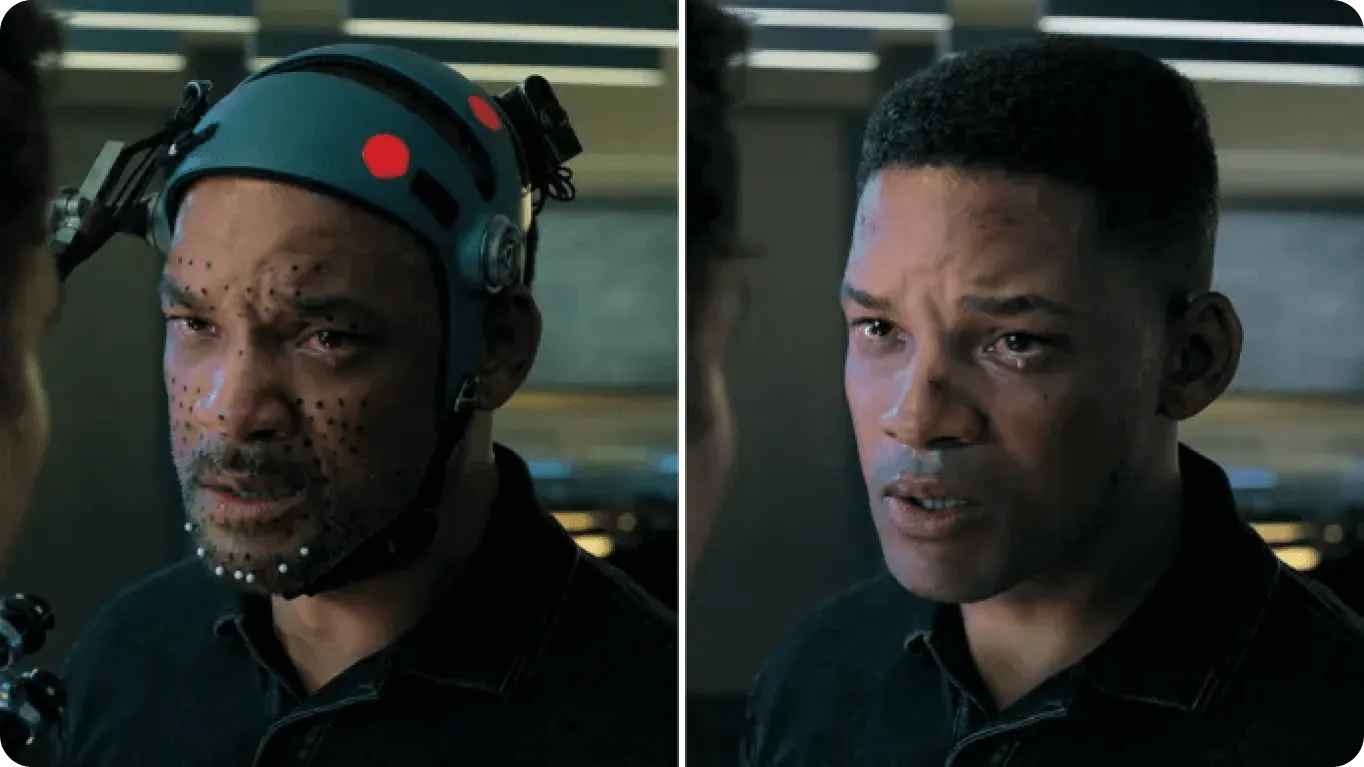
Here's how de-aging technology that uses AI works:
This process enables filmmakers to achieve stunning realism, whether creating younger versions of actors, entirely new characters, or enhancing complex visual effects.
It’s important to keep in mind that AI in visual effects and CGI is a broad field that encompasses a wide range of techniques and approaches. For example, one key technology behind these innovations is computer vision, a branch of AI that helps machines analyze and understand visual data. While computer vision alone can’t make visual effects possible, it plays a crucial role in enhancing their realism and integration.
Consider object tracking - it is a computer vision task that helps follow the movement of objects or actors in a scene, ensuring digital effects stay aligned with live-action footage. Object tracking works by analyzing video frames to detect an object’s position and movement. This information is used to anchor digital elements, like CGI characters or effects, so they move naturally with the tracked object. For instance, in an action scene, it can follow an actor’s hand to seamlessly add a CGI weapon or glowing effect, making it look like part of the physical environment.
AI-generated characters are changing the way filmmakers tackle challenges like completing performances after an actor’s passing. In Furious 7, AI was essential in bringing Paul Walker’s character, Brian O’Conner, back to life after his untimely death. The filmmakers used CGI and AI to digitally recreate Walker’s face, relying on his brothers, Caleb and Cody, as well as actor John Brotherton, to act as stand-ins. AI analyzed Walker’s previous performances to replicate his facial expressions and movements with accuracy, while existing audio recordings were used to craft his dialog. The innovative use of AI allowed the film to be completed and helped pay tribute to Walker’s legacy.
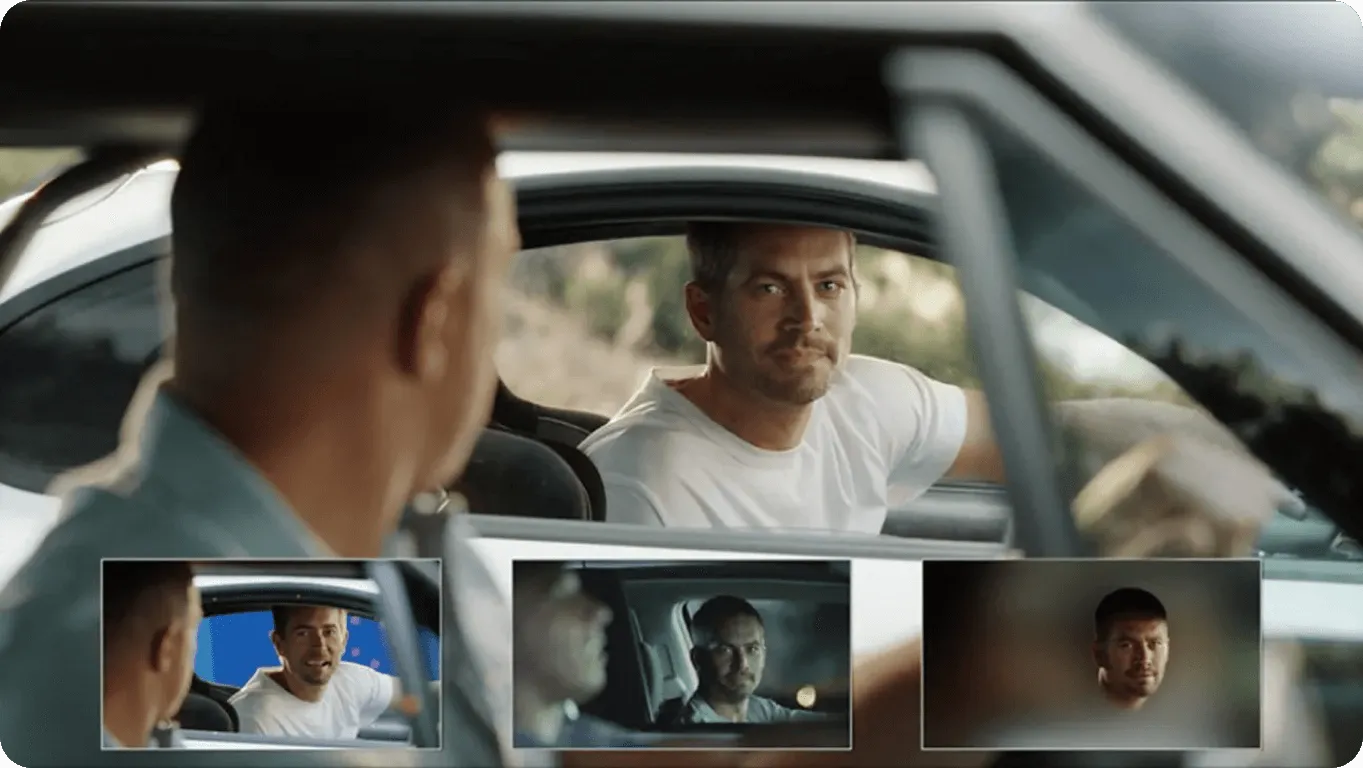
Generative AI is accelerating the pre-production phase of filmmaking by assisting with creative tasks such as scriptwriting and story development. AI models are capable of analyzing scripts and dialogs from different films and can generate scripts or stories based on given prompts. These AI tools can identify patterns in storytelling, suggest plot points, and even create dialogs that align with specific genres or tones. This saves time and offers filmmakers a unique starting point for their creative process.
One interesting example of AI’s creative use in filmmaking is the 2016 short film Sunspring, produced by End Cue. What makes this 9-minute sci-fi film unique is that its script was entirely written by an AI bot named Benjamin. Trained on hundreds of scripts, dialogs, and subtitles from 1980s and 1990s films, Benjamin showcased how AI can bring a fresh perspective to storytelling.
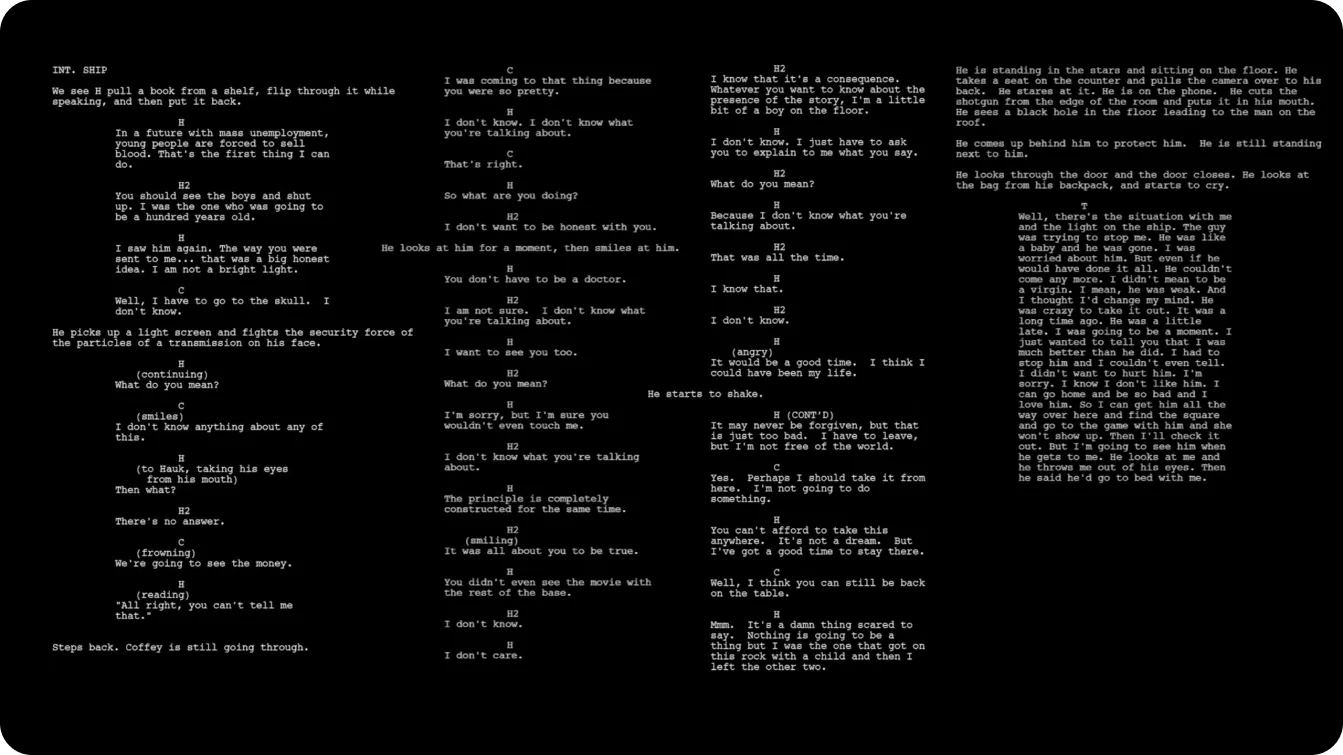
Advanced technologies have been used in film post-production for years, but they often take a lot of time and effort. AI is changing that by simplifying the process and introducing new creative tools like automated editing and voice synthesis, making filmmaking faster, easier, and more innovative.
Editing is one of the most time-consuming processes in filmmaking. Editors usually spend hours reviewing footage, analyzing shots, selecting the best takes, and aligning them together. For instance, in the Taken 3 (2014) movie, a 6-second scene where Liam Neeson (Bryan Mills) jumps over a fence involves 14 cuts from multiple cameras. To produce this brief sequence, the editing crew had to review footage from various cameras closely, make several adjustments, and finalize the sequence.
To pace up these processes, we can use AI-powered editing tools to analyze the footage from different cameras and get a cohesive final output. Computer vision plays an important role in these tools through techniques like scene classification to identify and organize different parts of the footage, such as action sequences, dialog scenes, or transitions. It helps AI tools understand the structure of a film and make better decisions about which clips to use and how to arrange them.
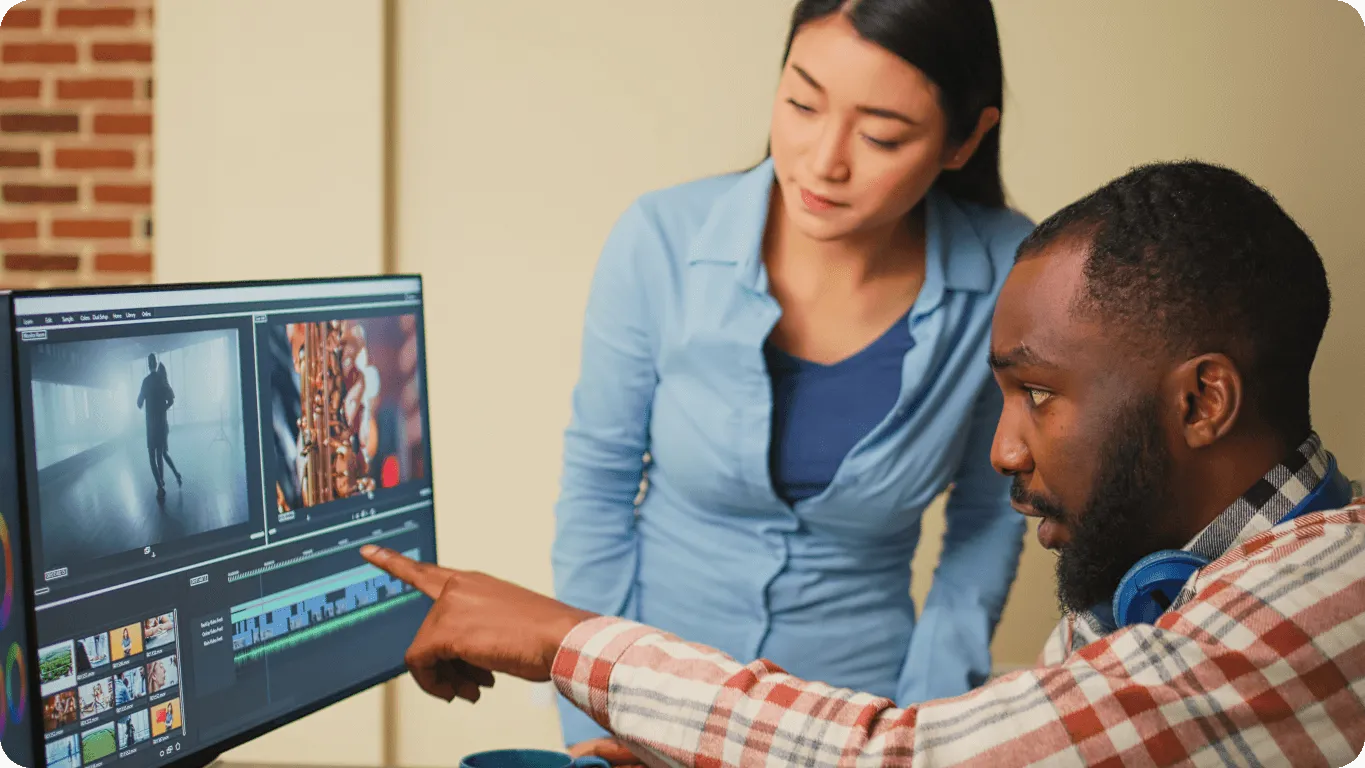
In a movie, theme music and background scores play a crucial role in elevating scenes and connecting the film with its audience. Perfecting the pitch and tone to match the intensity of a scene - whether amplifying it for action sequences or softening it for emotional moments - has always been a challenging task for composers.
To simplify this process, many composers now use AI music generation tools. For example, Michael Giacchino, an Oscar, Golden Globe, and Grammy Award winner, used AI tools to create some of the dark and atmospheric tracks in The Batman (2022).
In the past, sound engineers used to rely on different properties to mimic sounds in a scene. For instance, the Tyrannosaurus rex roar in Jurassic Park (1993) is a blend of different animal sounds. Gary Rydstrom, the film’s Oscar-winning sound designer, used a combination of sounds from a baby elephant’s squeal, a tiger’s snarl, and an alligator’s gurgle to craft the unforgettable roar. Recording these sounds from different sources requires time and advanced recording systems.
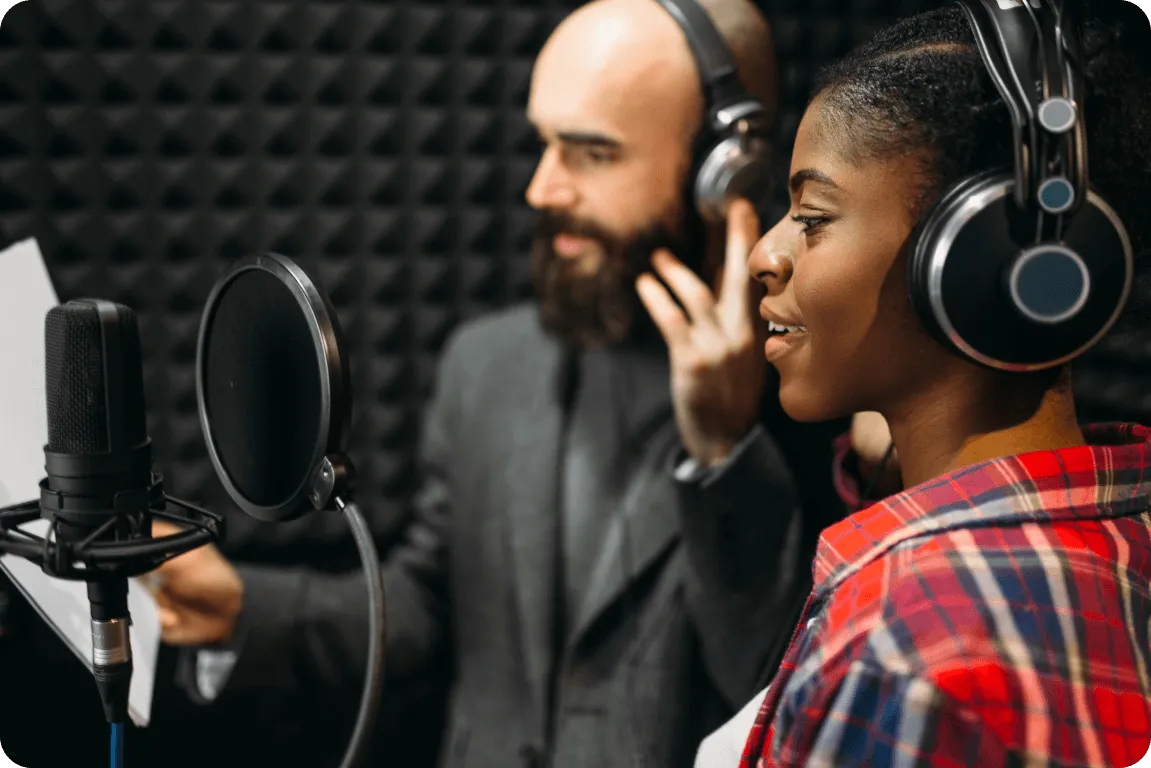
However, with AI tools that can generate different sounds, they can be created with ease. For example, in the movie, Top Gun: Maverick (2022), actor Val Kilmer, who plays Tom Kazansky, lost his voice due to throat cancer. The film crew used advanced AI to recreate his voice.
While AI can boost efficiency and unlock new creative possibilities, its growing role in the industry also raises important ethical questions, such as:
AI has emerged as an impactful tool in the filmmaking industry. From boosting visual effects and streamlining post-production to generating creative content and personalizing viewer experiences, AI is changing the way we consume and create films.
While the potential benefits of AI are immense, it's crucial to address the ethical challenges associated with its use. By fostering responsible AI development and prioritizing human creativity, we can create a future where technology and art seamlessly intertwine, enhancing the storytelling experience while respecting artistic values.
Learn more about AI on our GitHub repository and join our active community. Explore various AI applications in sectors like manufacturing and self-driving.